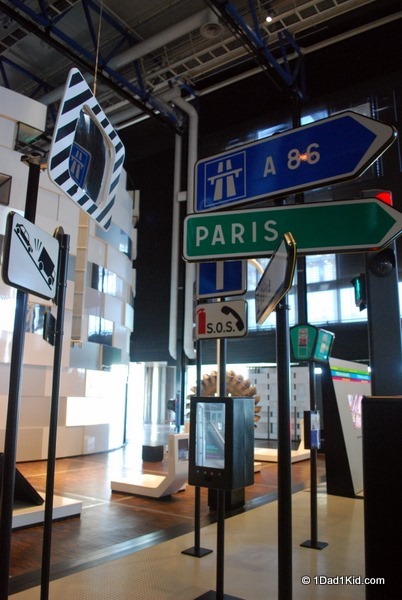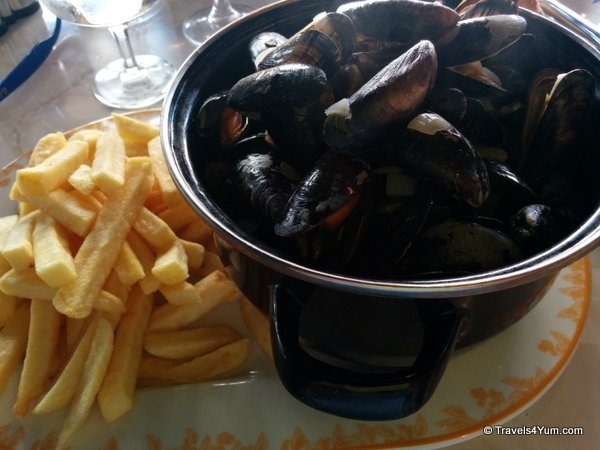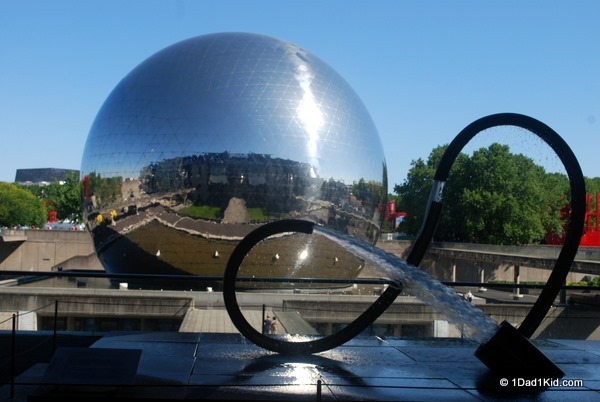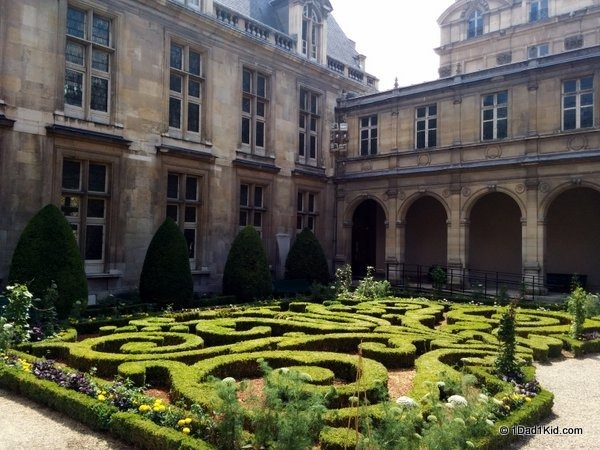Paris is lovely, romantic, unique, and famously expensive. There are plenty of methods, however, for saving money when visiting the City of Lights. I’ve spent lots of time in this fabulous city, and over the years I’ve tried out different things, done some math, paid attention to the locals, etc. Here are my tips for making a trip to Paris less painful.
Transportation
Mass Transit
Public transportation is extremely popular in Paris, and they have a very robust system for getting around. For the most part, one ticket is all you need. They are generally transferable between modes of transportation. This means you can take a bus to the metro station, hop on a train, and ride the funiculaire all on the same ticket.
When arriving or departing via the main airport (CDG), you can get to/from your accommodation on the same ticket since it also covers Paris city transportation. In 2015, the ticket costs 10€. There are various options from the other airports.
Given how rough Paris traffic can be, you’ll probably arrive at your destination much more quickly via this route, and it can save you as much as six times the amount you’d spend on a taxi.
I have read several writers claim that getting the various daily passes (1, 3, 5, etc.) is the absolute cheapest way to travel in Paris, and I am going to disagree. If you are using the system for more than 6 trips a day, then yes that is the cheapest. However, as Paris can be quite walkable, I find that I use the metro maybe 3-4 times a day.
Paying full price for each trip would cost 7.20€ total for 4 trips while the 1-day pass costs 11.15€.
If you purchase a carnet, it’s even cheaper. The carnet is a pack of 10 tickets and costs 14.10€ (versus 18€ if you bought 10 individual tickets). The additional bonus with the carnet is that if you only use 3 tickets in a 1-day period, you still have 7 others whereas the pass will expire regardless of how little it was used.
Also, the pass can only be used by 1 person. So two people using a daily pass each is going to cost over 22€ whereas buying a carnet would give you each 5 trips for just over 14€. A carnet would often last us up to 3 days. A 3-day pass is 24.80€. Over 10€ more expensive!
On our last trip to Paris, I easily saved over $12 USD by purchasing carnets.
Taxis
If you just don’t want to deal with the metro, buses, etc., I’d recommend using Uber over the regular taxis. In looking at estimated fares for various routes, Uber often charged about half. This method does requires that you have a smartphone with at least WiFi access, though.
One of the other benefits with Uber is you don’t have to have cash or your card on you. When you set up your account, you store your payment info through the app, and it will charge you after the ride is complete.
Bicycles
If you’re more adventurous, you can make use of the handy Vélib rental system. A day pass costs 1.70€. The bikes are free for the 1st half hour of each trip. When your time is getting close, you can park the current bike at a station and get a new one. It pays for itself in just the 1st use when compared to using the metro or bus.
If you have a chipped debit/credit card, you can buy your pass at the machine. Otherwise, you will need to buy your pass online.
Saving Money on Food and Beverages
There are some basic tips that can go a long way in stretching your budget while still eating and drinking well.
- Get food in the grocery store. Almost every store has pre-made sandwiches for cheap. Or you can pick up some fresh bread (another staple in France), cut meats/salami, cheese, etc., and have a nice picnic. You can often get a sandwich, chips, and a drink for around 4-5€. Buy drinks here as well. A can of soda in the grocery store is usually half the cost of what you’ll find at shops, bakeries, and so on.
- Get crepes. Crepes aren’t just for dessert. You can get savory crepes that are quite filling and cost 2-5€ (depending on which ingredients you select). They’re quick to get and easy to take on the go. If you’re traveling with finicky people, crepes are generally a people pleaser.
- Visit the boulangerie. These bakeries usually have a nice selection of prepared sandwiches, and they typically cost around 2-3€. Many of them also have personal-sized pizzas for sale.
- Don’t drink at bars/pubs if you want to save money. The markup is huge, even during happy hour. For instance, a can of Guinness in the store is usually around 2€ while in the bar it can cost 9€.
- Make use of the duty-free shop at the airport. Liquor is heavily taxed in France. I saved about 10€ by buying a couple of bottles of liquor/spirits there instead of in the city. This does not, however, apply to wine.
- Buy wine in the grocery stores. France is one of the places where good wine is incredibly cheap. I have often found that a 2-3€ bottle of wine in France easily outdoes a $20+ bottle in the US. In Paris, don’t let low prices on wine scare you.
- Eat out at lunch instead of dinner. You’re in France so obviously you want to eat out at least some of the time. And crepes for every meal can get old. One of the French customs I enjoy is the practice of the leisurely lunchtime. Workers often escape the office for an hour or more for lunch. Because of this, most restaurants have really great prix fixe menus at lunchtime. I’ve seen 3-course meals, including a drink, for as low as 9€. Generally speaking, you can expect the average to be around 11-15€, though. I recently splurged and ate at a more expensive place and had: tomato and onion salad, lots of bread, soda, a glass of wine, a huge portion of moules frites (mussels and french fries), and a large portion of crème caramel for 24€. Considering the quality, it was a great price. Dinners in “sit down” restaurants will almost always cost more.
- Get out of the tourist areas. Walk for about 5 minutes in almost any direction away from a heavily touristed area, and you’ll easily find much better prices (and better tasting food). The more popular the sight, the more expensive the food (11€ for a crepe near the Eiffel Tower, for example).
- Walk a bit more. From what I’ve seen, any food place next to a metro entrance/exit charges more. Go down the street a bit for more reasonable prices. Also, places on main thoroughfares tend to be pricier.
Tips for grocery stores
- I’ve found the best prices at Leader Price and Dia stores. Lidl has great prices, too, but they’re tougher to find. Generally speaking, I have found the Monoprix and Franprix to have higher prices, although their meat quality is often better.
- Fruit stands/shops and fresh markets are usually a bit cheaper, but their quality is better than what you usually find at the supermarkets. I rarely get produce at the big stores. It just doesn’t taste as good.
- Always have a plan A, B, and C for stores in your neighborhood. Some will close on Sunday, others on Monday. Some have full hours on Saturday while others will shut down early. If you’re staying in an area with a large population of immigrants, Friday may be the day you have a hard time finding shops that are open.
- If you have access to a microwave, the store Picard is a frozen foods store. Their meals are rather good quality, and the prices are very reasonable.
Museums and Monuments
Prices vary widely for museums in Paris. Some will offer free admission to anyone who is 18 or under. Usually anyone between the ages of 18 and 26 with a student ID card will have a reduced rate. Some museums, like Musée Carnavalet, are free.
It’s always a good idea to check their website for the various admission prices and to see what methods qualify for free or discounted admission. Also make sure to check for closures. Many sites are closed on Monday, and sometimes they have special events.
Most museums have free admission on the first Sunday of each month. Just keep in mind these days can get quite crowded in the more popular places.
The Paris Info site has a great list showing which museums and monuments are always free as well as which ones offer free days. They also include free tours, concerts, etc. It’s a great reference.
Museum Pass
This is one of those things that can definitely save you money if you plan on visiting a lot of the sites in and around Paris. The Paris Museum Pass gives you access to most of the museums and monuments in Paris. In addition to potentially saving money with them, you often also get to use a priority line meaning that you can get right in instead of waiting for an hour (or longer).
And sometimes it gets you in when they’re closed! On my first trip to Paris, I went to the Musée Rodin. The ticket office was closed as they were hosting a private event in the gallery. However, since I had the museum pass I didn’t need to buy a ticket so they let me into the other areas of the museum.
The pass also works at various sites outside of Paris, like Versailles, Fontainebleau, etc., and may include use of the audio tours.
Again, if you plan on visiting many of these places, you could save a significant amount of money with the pass. If you only plan on seeing two or three, then it may not be in your best interest. (Although, being able to use the priority entrance could change your mind.)
Lodging
The best tip I can give on this one is to not visit Paris during the high season (summer is especially bad). Prices go way up for traditional lodging. Airbnb places, however, seem to not see as much of a drastic increase.
Paris is definitely one of those places where having access to a kitchen and refrigerator are going to save you a lot of money. Remember that special lunch I had? Well, I could get 2-3 days of groceries for that same price.
Yes, it makes that big of a difference.
As one might expect, prices go down the farther you are from the center. If you’re looking for that quintessential Parisian experience, though, you may not want to go too far out. For example, the 18th and 19th arrondissements (districts) are much more heavily populated by immigrants and the feel is more unique to that cultural mix. But the savings can be quite remarkable. We stayed at an Airbnb place in the 19th that cost less than $30 USD per day. That is a steal for Paris, but I now wish I had spent more money and stayed in a different area. It just didn’t have the feel I love from other areas of the city.
Sometimes you have to weigh out the pros and cons of saving money versus having the ultimate Parisian experience you’ve perhaps dreamed about.
If you have questions, feel free to ask in the comments. Or share your own tips!










November 19, 2015
Thanks for the tip to buy alcohol and wine in the store instead of at the bar. I didn’t realize they mark it up so much! That will definitely help us when we do our land tour of Europe next year!
November 19, 2015
Yeah, it’s a pretty huge markup. Most restaurants will let you bring your own bottle of wine, too, which helps. For spirits, stock up as much as you can in the duty free store if you’re flying in.
July 22, 2015
Reading this post, I realized how much I miss Paris 🙂 Apart from that though, indeed even if Paris can be expensive, you can save some money. For me, for instance, the pass wasn’t a solution either due to some own limitations – in terms of areas covered in one day. I also recommend their pancakes (crepes) as food – in fact, I got some ideas for home (in terms of the fillings :D.)
July 28, 2015
Crepes are one of my favorite meals there.